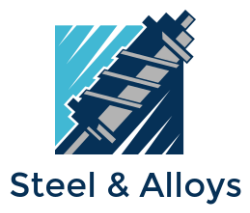High Carbon Steels & Spring Steels
High Carbon Steels and Spring Steels are a group of versatile materials widely used in various industrial applications. These steels are known for their exceptional strength, hardness, and spring properties, making them ideal for applications where toughness and durability are paramount. In this article, we will explore different grades and their properties, available shapes and sections, production routes, and offered machinable conditions.
**Grades and Properties:**
EN-42, EN-43, EN-44, EN-45, EN-46, EN-47, EN-48, and other similar grades fall into the category of high carbon and spring steels. These grades typically have carbon content ranging from 0.70% to 1.05%, which contributes to their high strength and hardness. Additionally, these steels can be heat-treated to achieve excellent spring properties, allowing them to return to their original shape after being subjected to deformation.
**Available Shapes and Sections:**
High Carbon and Spring Steels are offered in a wide range of shapes and sections to cater to diverse industrial needs. The common shapes include rounds, squares, rectangular cross-sections (RCS), flats, hexagons, and wire. Each shape is carefully designed to provide specific properties and fulfill distinct engineering requirements.
**Size Range for Each Section:**
The size range for each section may vary depending on the specific steel grade and manufacturer. Generally, high carbon and spring steels are available in various standard sizes as well as custom sizes to meet the demands of different applications. Typical sizes for rounds, squares, RCS, flats, hexagons, and wire can range from a few millimeters to several inches in diameter or width.
**Production Routes:**
The production routes for high carbon and spring steels play a vital role in determining the quality and characteristics of the final product. Some common production routes include:
1. **Non-Vacuum Degassed Route:** This conventional production route involves the use of raw materials without vacuum degassing. While it may have some impurities, it is cost-effective and suitable for certain applications.
2. **Vacuum Degassed Route:** In this route, the raw materials undergo vacuum degassing to remove impurities, resulting in higher purity and improved material properties.
3. **Forged Route:** Certain sections, such as bars and large-sized components, are often produced through forging. Forging enhances the material's mechanical properties, making it more robust and reliable.
**Machinable Conditions:**
High Carbon and Spring Steels are offered in various machinable conditions, each tailored to specific needs. These conditions include:
1. **As Rolled:** As-rolled condition involves the steel being supplied in its raw form after the rolling process. It is suitable for applications that do not require extensive machining or precise dimensions.
2. **Annealed:** Annealing involves heating the steel to a specific temperature and then slowly cooling it, enhancing its machinability and reducing internal stresses.
3. **Normalized:** Normalizing involves heating the steel above its critical temperature and allowing it to cool in still air, leading to uniformity in microstructure and improved machinability.
4. **Spheroidize Annealed:** This process improves machinability by converting cementite into spheroidal form, resulting in reduced hardness and improved cutting characteristics.
5. **Cold Heading Quality (CHQ):** CHQ steels are designed for cold forming and heading processes, making them suitable for producing various fasteners and components.
**Conclusion:**
High Carbon Steels and Spring Steels, such as EN-42, EN-43, EN-44, EN-45, EN-46, EN-47, EN-48, etc., offer a wide array of properties, shapes, and machinable conditions to suit diverse industrial needs. Their exceptional strength, hardness, and spring properties make them indispensable in numerous applications where reliability and durability are crucial. Whether it's for manufacturing springs, fasteners, or critical components, these steels continue to play a significant role in shaping modern industries.
